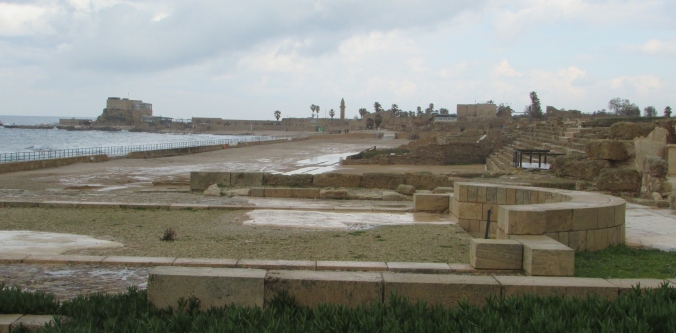
Traveling north from Tel Aviv, we came to Caesarea Martima or Caesarea by the Sea, not to be confused with Caesarea Philippi which we visited a couple of days later. Once an amazing complex overlooking the Mediterranean Sea, Caesarea Martima was one of the great architectural achievements of King Herod the Great. Described as both the greatest builder in Jewish history and a madman who murdered his father-in-law, several of his own wives and two of his sons, it was this same Herod who ordered the massacre of all the baby boys aged two years old and under in Bethlehem and its vicinity after he was outwitted by the wise men who came from the east to visit the baby Jesus. (Matthew 2:1-17)
At Caesarea, named after his Roman patron, Caesar Augustus, Herod built himself a magnificent palace, complete with a freshwater pool, on a promontory jutting out into the waters of the Mediterranean. The site also included a harbour that would accommodate 300 ships, a theatre that would seat 3500 and the massive Hippodrome where horse races and other special events were held.
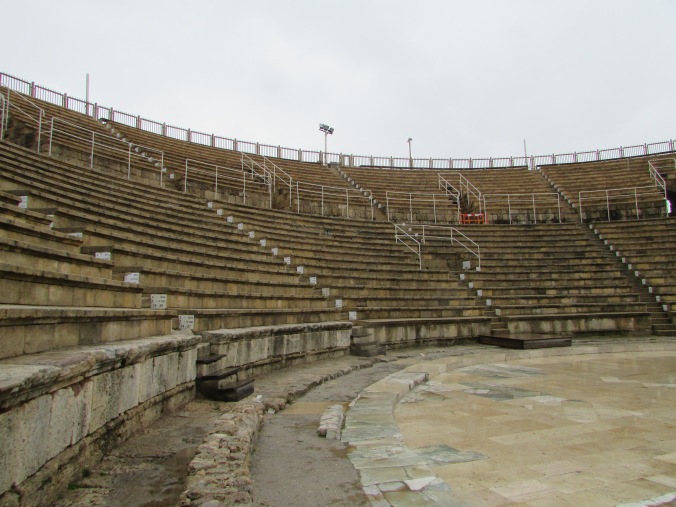
Theatre

Remains of Herod’s palace
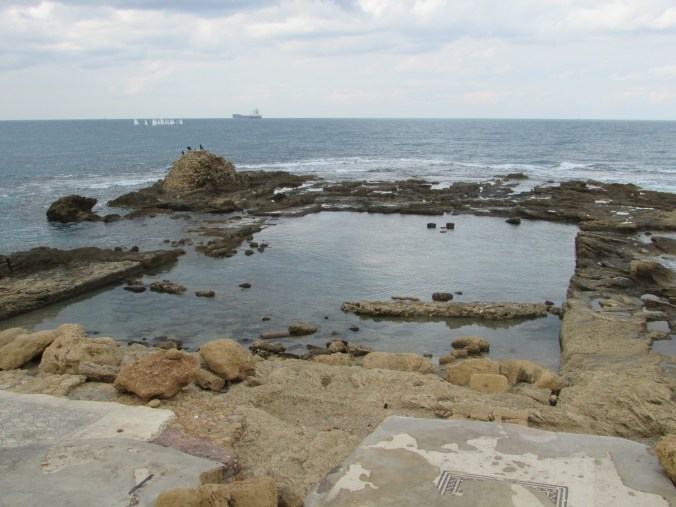
The pool
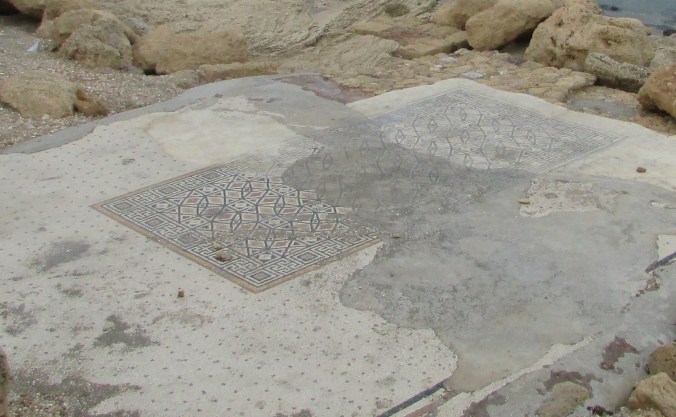
Mosaic floor
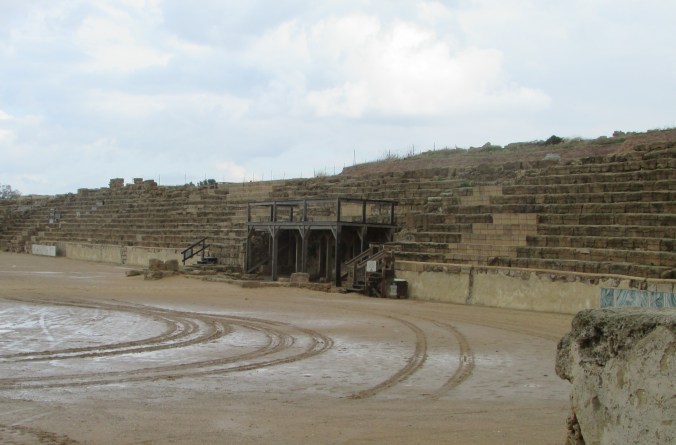
Hippodrome
The Hippodrome originally sat some 10 000 people, but the seating on the sea side is missing. Large sections of it have been found in the sea some distance from their original location. It is thought that they might have been dragged out to sea by a tsunami. A major geological rift runs the entire length of Israel making it an earthquake zone.
From a Biblical perspective, perhaps the most significant find at Caesarea thus far has been the Pilate stone, a damaged block of engraved limestone with an authentic 1st-century Roman inscription mentioning the name of Pontius Pilate, the Roman governor who sentenced Jesus to death. (Matthew 23:1-25) It provides non-Biblical evidence proving the existence of this man. It is likely that he made his base here at Caesarea Maritima.

The Pilate stone
It was also at Caesarea that the apostle Paul was imprisoned for two years while he awaited transfer to Rome. (Acts 23:23-26:32) It may have been in this small room or one just like it that he was held.
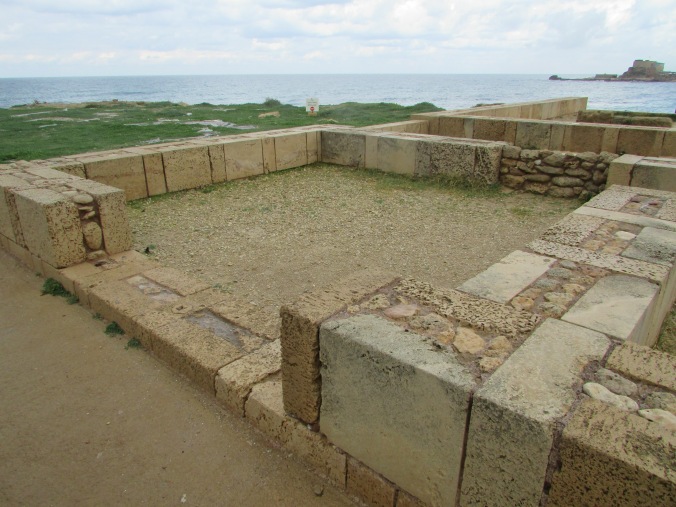
Lack of fresh water at Herod’s complex required it to be brought from springs at the base of Mount Carmel nearly ten miles away. That posed little problem for the great builder, however, who simply had his labourers build an aqueduct. An amazing engineering feat, the aqueduct was built on arches and the gradient carefully measured so that the water would flow by the pull of gravity.
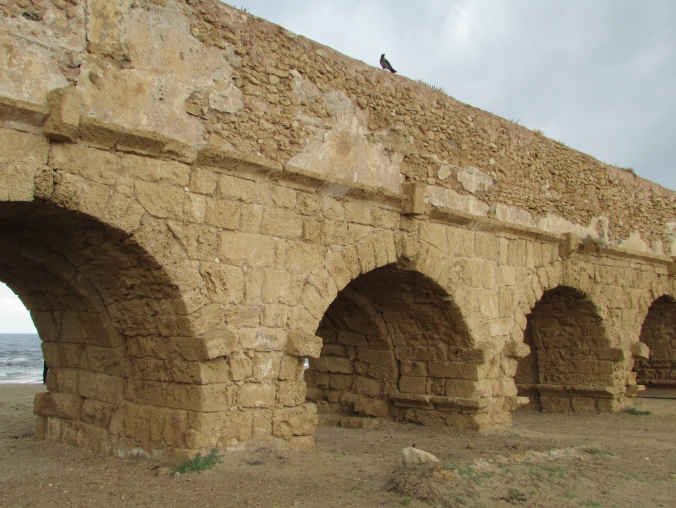

This is awesome!
I’m Ray from London originally from Hong Kong.
Just stared my journal about cultures and travel
This month will be about Asia and just wrote about trip to Japan:)
would be really lovely if you lovely people can check it out !
https://journaloftheasiangirl.wordpress.com/
Cheers X
Hi Ray! I lived in Japan for a year and absolutely loved it. I look forward to reading about your trip!
Wonder if he had some help from the Romans for the aqueducts – You’re right, quite an amazing engineering feat! And there it stands … as Jesus and certainly Paul would have seen it.
It still amazes me that I could see the same things they saw 2000 years ago!
Pingback: The mountain that moved | Following Augustine